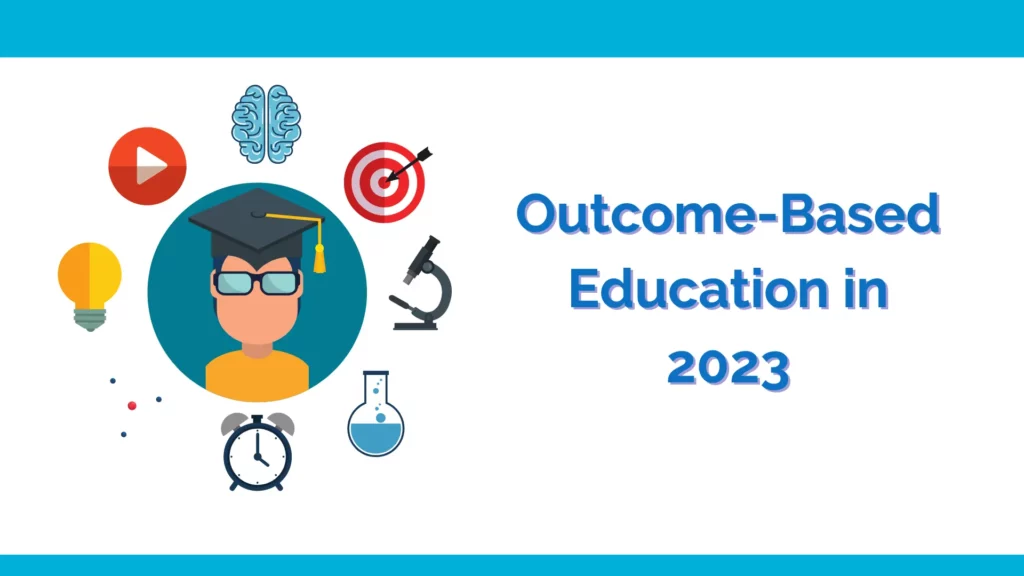
It takes a lot of time and effort for students and teachers in the traditional system of education to learn every subject’s syllabus. The primary objective of the course and curriculum was to score well on the exam. Due to this method, students weren’t skilled or knowledgeable enough by the end of the semester. It also exacerbates the unemployment problem in the country as many students were not sufficiently qualified to meet corporate candidate requirements. Differences between industry and course requirements lead to student unemployment. To avoid this problem, schools and universities must move to an Outcome Based Education System (OBE). This is a new and evolved educational learning system that focuses on actual course outcomes, not just grades.
What Is Outcome-Based Education?
The goal of outcome-based education is to focus all parts and aspects of the education process on the outcomes of a course. Students choose courses with the aim of developing skills or gaining knowledge, and they must accomplish the goal by the end of the course.
The key to success in outcomes-based learning is clarity and giving teachers and students a sense of what is expected of them. Students are given clear goals and regular progress assessments and receive personalized feedback on how well they’ve met those goals. Outcomes-based instruction aims to create a clear expectation of the outcomes students are expected to achieve.
The basic principle of resulting education is that students must meet certain criteria in order to graduate. There is no set learning style or time limit. Students can study according to their own choice. Teachers, facilitators, and instructors guide students based on desired outcomes. So instead of using curve scores in outcome-based teaching, teachers are free to experiment with what they think works best.
Traditional Education System Traditional teaching is an old teaching method where the teacher lectures and the students sit and listen. Education in the traditional environment is primarily about passing on the knowledge of the previous generation to the next generation. This is also the students’ oral recitation, when the teacher calls the students, the students will recite them. This system requires students to learn and remember what the teacher teaches without real experience, which will certainly improve students’ ability to continue. ‘Remodelling’ or ‘Restructuring’ of the norms is nowhere the prime goal in the traditional educational environment.
Outcome Based Education Vs Traditional Education System
Outcome Based Education
Provides students with the opportunity to become outputs rather than inputs.
The teachers focus on assisting the students with developing their skills.
It defines the outcomes that students can achieve during the course through the curriculum.
Traditional Education System
Teacher-centered, teachers discuss, and students understand.
An educational model that simply conveys knowledge and understanding of ideas to students. Some students succeed because they lack the knowledge and experience needed for higher education, such as high school.
Provide outcomes, particularly learning outcomes, that demonstrate what students can achieve as a result of their learning experience.
Adjusts students’ strengths and weaknesses to further develop their knowledge and skills.
It clearly indicates what students need to do.
All learning objectives will be clearly met to progress.
More students are prepared to succeed and improve their knowledge and skills
It has a practical activity where they will develop their skills through their experience.
Students put their trust in teachers who give fair guidance without demonstrations that students need to understand more.
It is about the teacher reciting while the students just sit and listen.
There are no activities to assess the knowledge acquired by students or so-called performance tasks.
Evaluate, recall, and memorizing what the teacher has discussed with the student.
The hours are clearly set, and students will memorize the course lectures at the end of the quarter.
There are no hands-on activities for students to experience.
| Outcome-based learning is more than just listening and learning, it provides students with demonstrations of tasks and what they can do. | In order to know and remember what the teacher has taught, and when assessing the students’ learning, at the end of the course written assessments or so-called exams are made. |